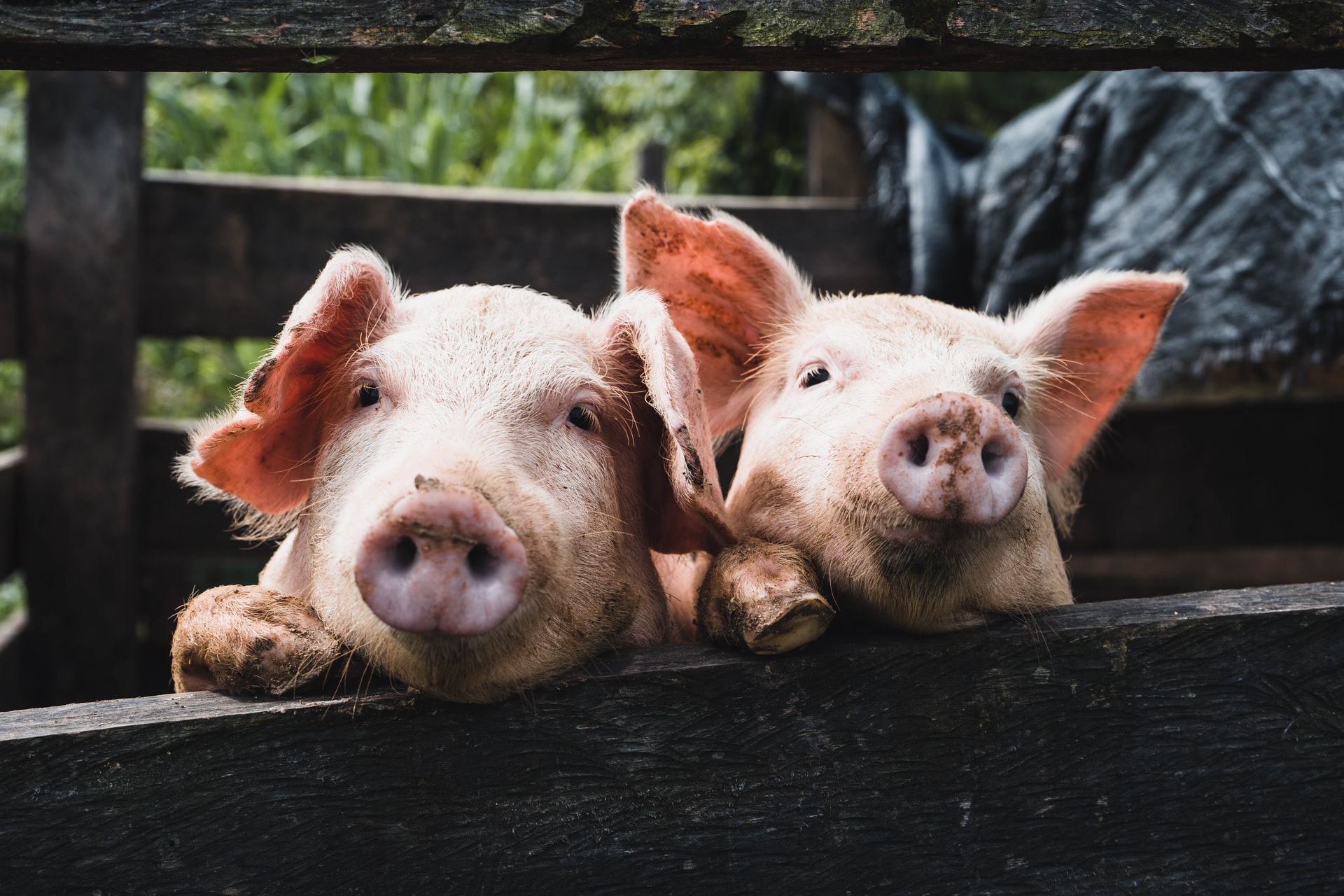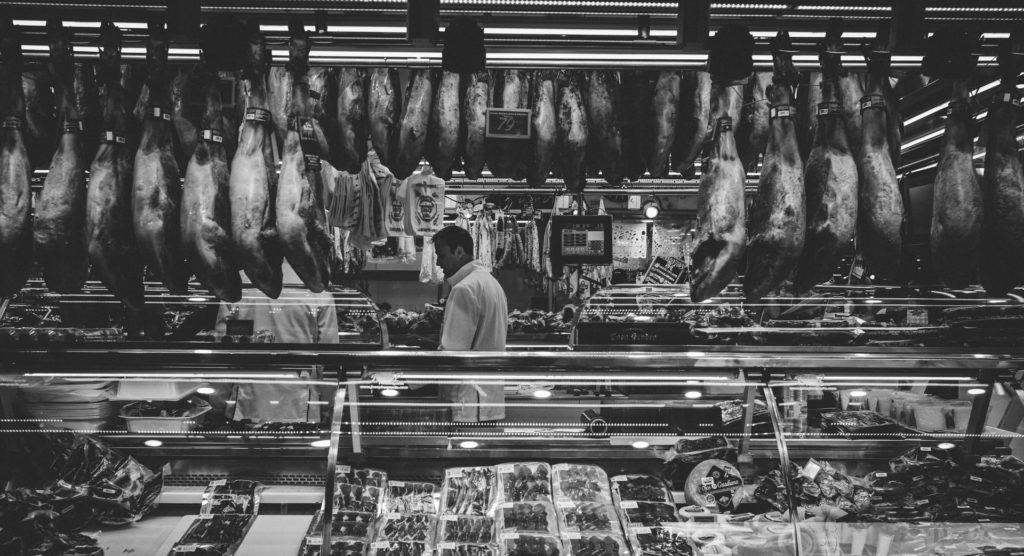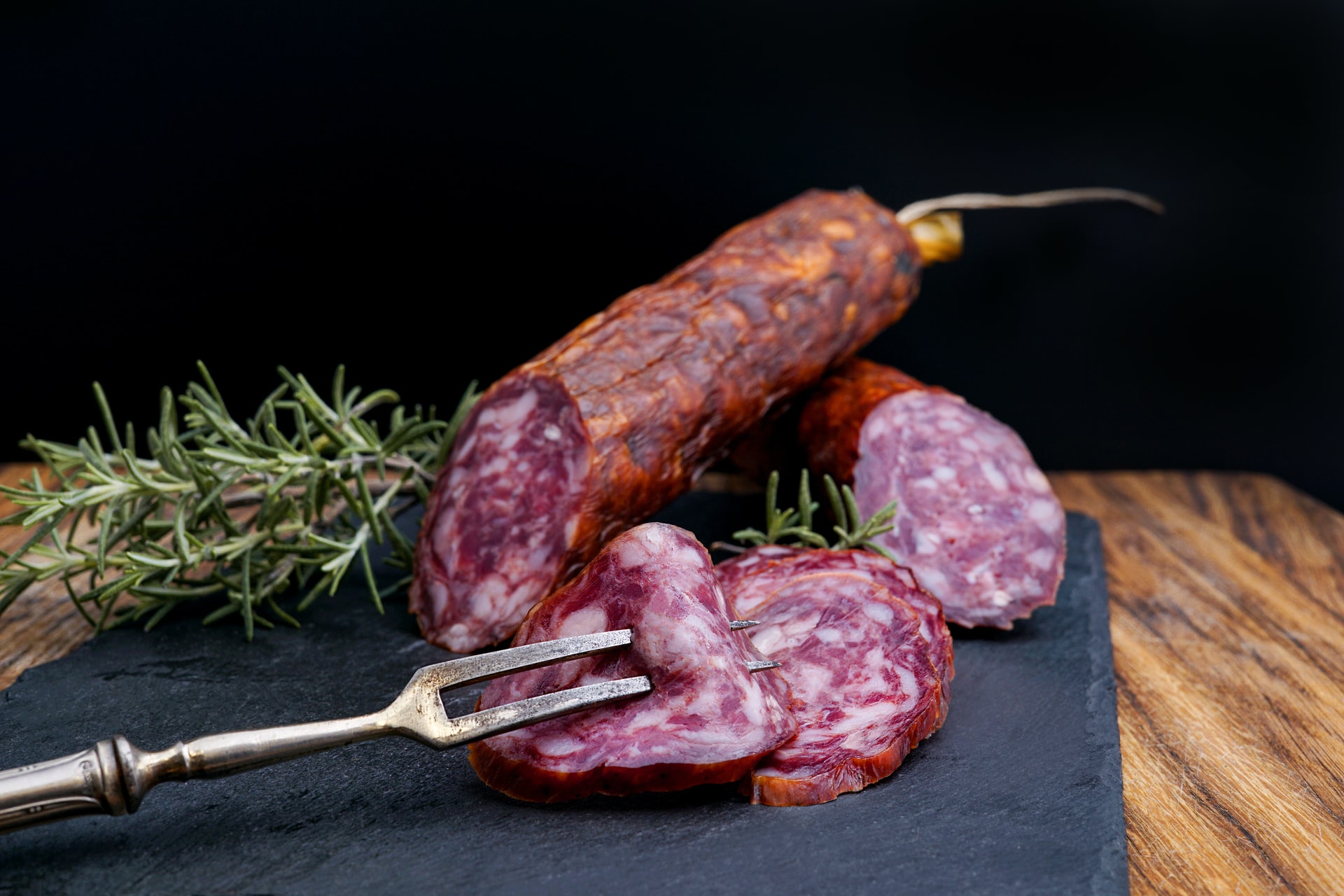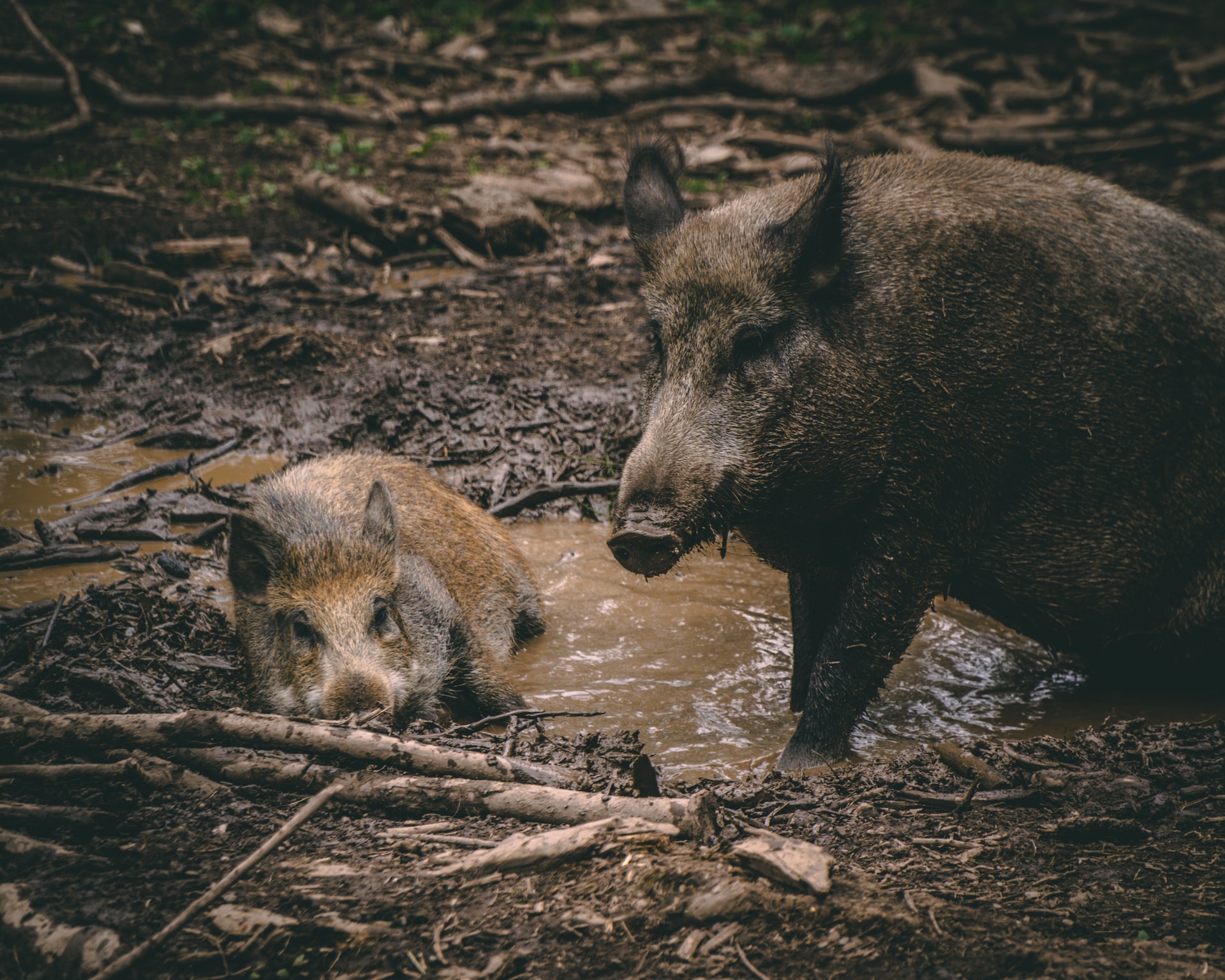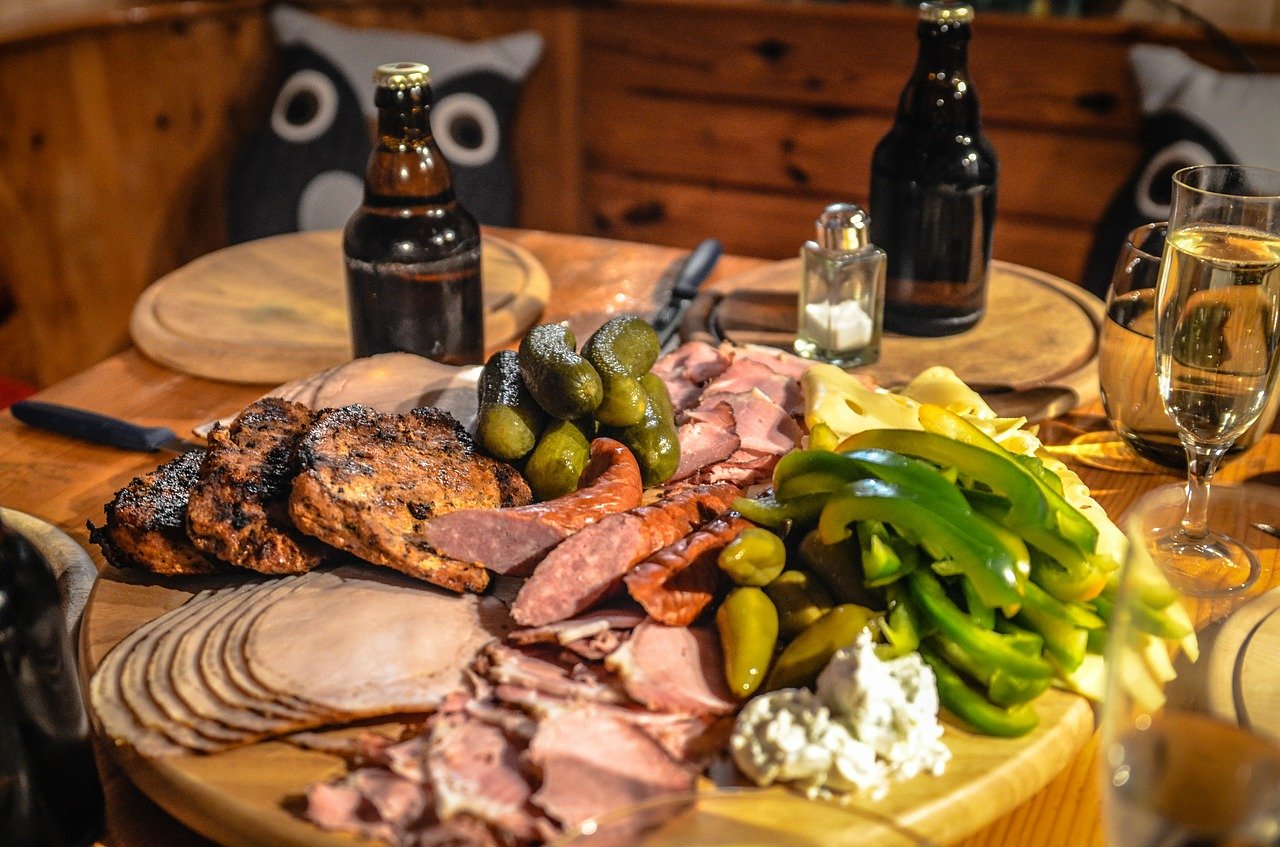“Oink.” I have to remember, pigs say “oink!”
For most of us, it is easy to disassociate ourselves from the animal we are eating. Chops and sausages, roasts and steaks all become familiar products far removed from their four legged or feathered origins. We bustle along the supermarket aisles, heads full of dinner plans and dental appointments and rarely if ever stop to wonder if the lamb roast in our cart might have loved its mother, or if the pork sausages with caramelised onions represent the last journey of an animal which lived its life in filth and squalor. It is better not to think of these things.
It is late April, and the lush greens of Autumn’s gentle warmth are giving way to the muted greys of Winter’s approach. It is going to be a cold one this year – I can feel it in my bones. The frosts have begun in earnest as night-time temperatures plummet to below freezing, scorching the remnants of our Autumn veggies, bringing with it the soft layer of wood smoke that drapes over our small town like a veil. It is a time of huddling closer, of hearty slow cooking and backyard campfires. It is also the time to sharpen our knives, to bring down the meat grinder and unpack the sausage stuffer. It is once again the season of salami.
Every year a few local families join forces over two or three weekends in the production of our next twelve-month supply of delicious, spicy cured sausage. It had all begun eight years earlier. New to the town, I’d been invited by Ben, a bloke I’d met on the morning commute to Melbourne, to come along to his own annual Salami making day which he had been running for many years. A large group attended, and as we entered his backyard and shook hands trying to remember names, nothing quite prepared us for the sight of the production table. It was a standard dining table; pine, brown, perhaps an eight-seater. Today however it was wrapped all over in plastic and surrounded by men woman and children wearing latex gloves, all facing a giant pink mound of ground-up pork. Eighty kilos they told me, though it looked like a thousand. “Oink,” I thought.
“Here you go,” said Ben handing us some latex gloves. “Get stuck in, have a break when it starts to hurt…
“Here you go,” said Ben handing us some latex gloves. “Get stuck in. Mix it up, be rough, but have a break when it starts to hurt. It’s bloody cold. We’re about to add the spices.” He sauntered off with a beer in hand, laughing with an old mate as we took our place at the table. He wasn’t kidding, it was cold alright. Ignoring the pain of possible frostbite, we grab the meat and begin to knead, each heave and shove helping the added salt work its alchemical magic. Little by the little, the fleshy mass was becoming sticky and homogenous and our hands were succumbing to frost bite. Ben came in again with the huge bowls of spices ready to mix in – black pepper, chili flakes, toasted fennel, garlic and wine. The room began to fill with the glorious scent of an Italian market, the rich odours punctuating our conversation as we worked together, swiftly and with focus. Working fast was essential – for hygiene it was vital to ensure the meat stayed as close to frozen as possible – a lesson we would learn well in future years.
The sun had long set when the job was finally done. We were exhausted, but with nearly one hundred fat salamis stuffed and tied hanging along the rafters of Ben’s old farm shed, we couldn’t have been prouder of our efforts. A dreadlocked lady with a huge smile warmed her hands by the fire and mused to no-one in particular, “So primal, don’t you think? Just such a fundamentally human thing to do what we did today.” I agreed. This was living. Unless you were the pig.
In the years that followed a new group of neighbours took interest in our porcine proclivities and soon we had enough new families to splinter away from Ben’s well-established team. We began to buy whole sides of pork, preferring to access meat from the most ethical farms. We dabbled in making bacon and prosciutto and country ham, we bought a professional grade mincer and a high-volume sausage stuffer and extended our repertoires to produce a huge range of weird and wonderfully flavoured salamis. But amongst all the highs, the community-bonding and the sheer joy of seeing our kids engaged in this fundamental connection to their food, so too were there such lows as to make us all question the entire enterprise. We suffered spoilage, not once but at least three times. The cure didn’t work, the wrong mould took over, the cases dried too quick. We suffered mixed up measurements, gear-stripped grinders and ravenous, rapacious rodents. But the lowest point of all, the time that nearly broke us, was the year we kept pigs.“I’ve got a lead on some pigs. Bloke doesn’t want ‘em anymore, just wants some of the meat when we process them.” This was Jeff, a wine loving, beer making, moustache twirling bloke, who had enough land on his block to actually consider the idea.
I sipped my beer and mused. “Could do it. Have to build a space for them though. And work out who could do the, er, dispatching when it’s time.”
“There’s a bloke in Sunbury that will do all that. We can build a pen out of hay bales, share the load of feeding them and keeping the water full. They are pretty big now, by June they’ll be huge. Plenty for salami and prosciutto.” His enthusiasm – and optimism, was infectious. So it began. Three pigs, in a house made of straw. What started as lush and firm ground ended as mud twelve inches deep. What began as a neat hay bale wall swiftly became the facsimile of a heavily bombed village. We would feed them, and three hundred kilos of bacon would barrel towards us, knocking us over into the mud and shit, leaving us scrambling to get up in case they decided to get a taste for human blood. It would only have been fair I suppose.
This was our Verdun, our Ypres, our Flanders Field. The neighbours soon complained – the smell and grunt of three pigs isn’t conducive to good relations over the fence it turns out, but we pressed on, only a few weeks to go. They escaped. Often. The biggest one, a one hundred and twenty kilo black sow, would push her way past the electric fence we’d set-up and get stuck into the nearby veggie patch.
“Pig pig pig!” we’d call as we clapped our hands tried to frighten the animals back into their pen. The pigs would squeal and grunt as if this was the best game in the world. Three weeks later they rested in the back of my Mazda. Legs, loin, belly, side and heads, each chilled to almost freezing and wrapped in plastic. Oink.
Slice, trim, mince, add salt, knead, add spices, knead, chill, stuff, hang, wait, eat.
There is nothing quite like that first taste of your own home-made produce, no matter what it is. We slice it thinly and hold it to the light. Is the colour good? Does it smell good? How’s the bind? Fat ratio looks good. Is the fat turning yellow? Has that mould penetrated here? We check and inspect and fuss over every sausage. We’ve had things go wrong before, and we learn from our mistakes. If it all looks good, we set up the platter, and the kids come running out to get in first. Home made pickles from last summer’s patch, home cured Kalamata olives soaking in oil, a glass of cider made from apples grown wild beside the highway. And of course, the salami, the hero, salt and sour. Umami and spice.
